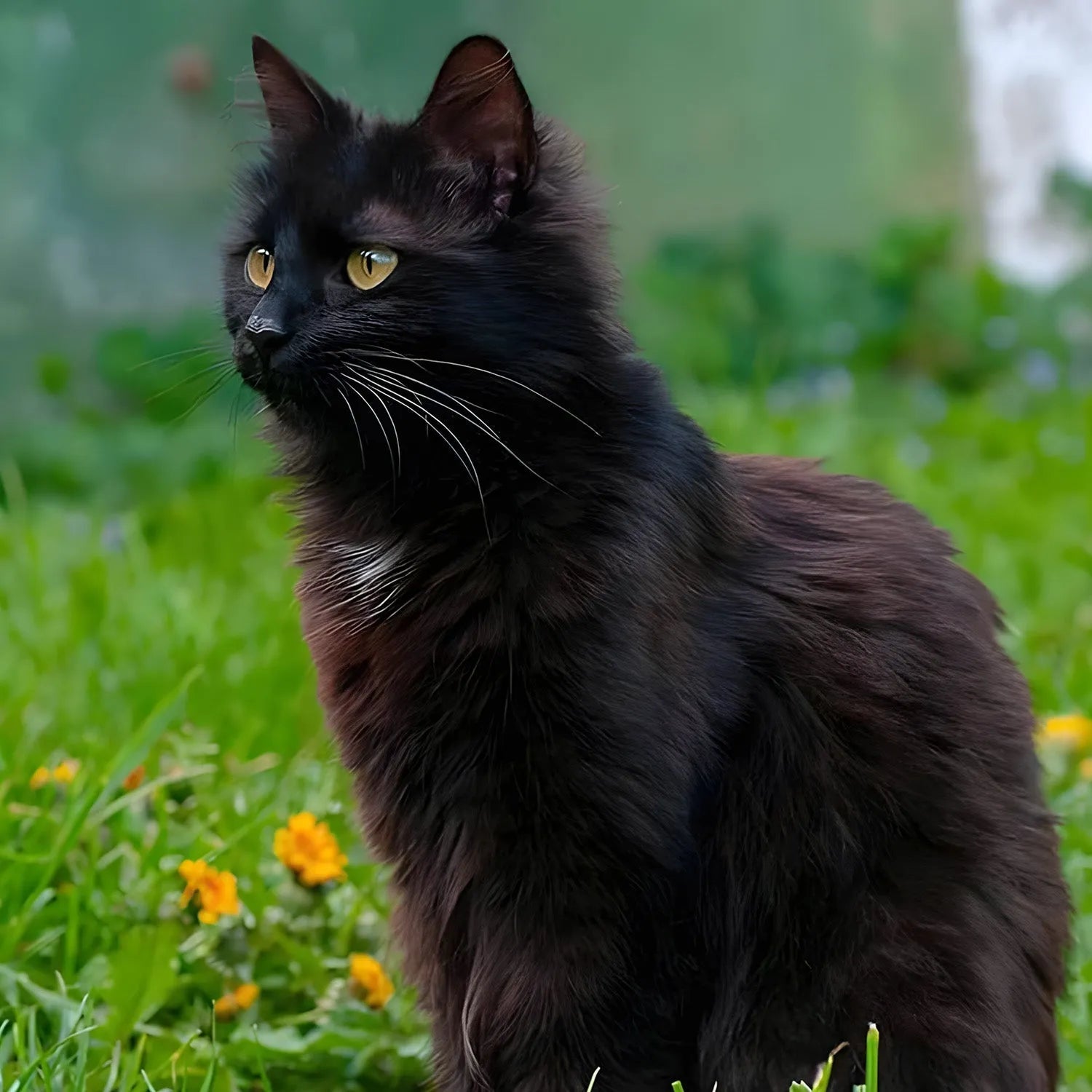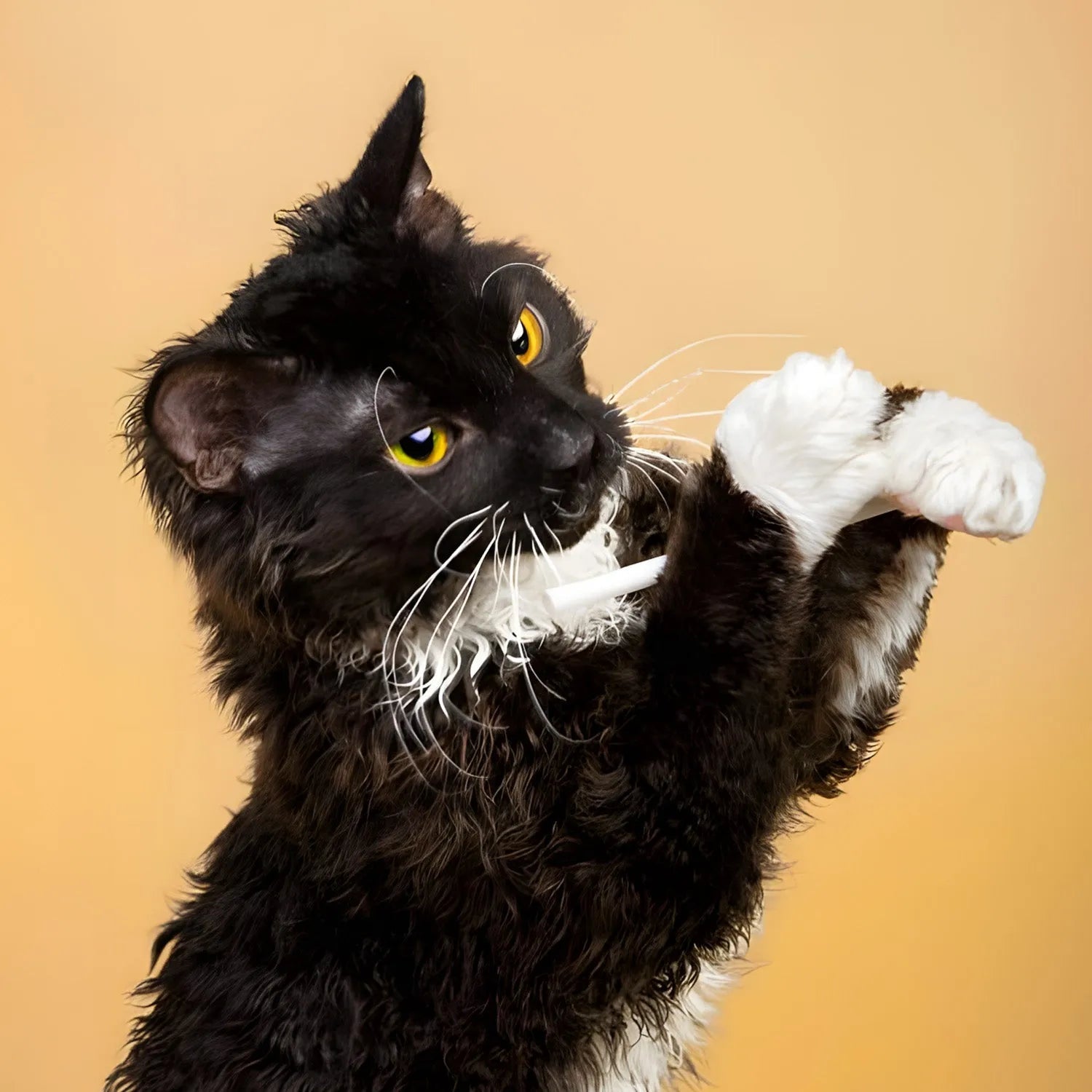Thai: The Traditional Siamese with a Loving Personality
Introduction
The Thai cat, often called the "Old-Style Siamese" or "Traditional Siamese," is a strikingly beautiful breed with captivating blue eyes and a muscular, athletic build. While the modern Siamese has evolved into a more slender, angular breed, the Thai cat retains the original appearance of the Siamese cats found in Thailand centuries ago. Known for their affectionate, outgoing personalities, Thai cats are deeply loyal to their human companions and are often described as "people-oriented" cats. In this blog, we’ll explore the Thai cat’s lifestyle, behavior, grooming needs, and how it interacts with humans and other pets.
Ratings (1-5)
-
Environmental Adaptability: 4
-
Food Consumption: 3
-
Need for Companionship: 5
-
Trainability: 5
-
Tolerance of Children: 5
-
Ease of Domestication: 5
History and Origins
The Thai cat has its origins in Thailand (formerly Siam), where it was a highly prized breed. The traditional Thai cat is the ancestor of the modern Siamese, with a more rounded, muscular build compared to the sleek and slender Siamese of today. Thai cats have been depicted in ancient manuscripts dating back to the 14th century, known as the Tamra Maewor "Cat Book Poems," which describe the prized native cats of Thailand.
In the late 1800s, Thai cats were brought to Europe, where they became the foundation of the modern Siamese breed. Over time, selective breeding led to the more slender, angular appearance of today’s Siamese. However, the traditional form of the breed remained popular in Thailand and among breeders who preferred the original look of the Siamese. This led to the preservation of the Thai cat as a distinct breed.
Today, the Thai cat is recognized by The International Cat Association (TICA) and continues to be a beloved breed for those who appreciate its affectionate personality and traditional appearance.
Physical Characteristics and Colors
The Thai cat is medium to large in size, with a muscular, athletic build and a rounded face. These cats have large, almond-shaped blue eyes that give them a captivating and expressive look. Their ears are medium to large and set wide apart, contributing to their balanced, harmonious appearance.
One of the most striking features of the Thai cat is its color-pointed coat, which is similar to the modern Siamese. The color-point pattern features darker coloring on the ears, face, paws, and tail, with a lighter body. Their short coat is sleek, soft, and close-lying, requiring minimal grooming to maintain its appearance.
Common Thai coat colors include:
-
Seal Point: Dark brown points with a cream or fawn-colored body.
-
Blue Point: Grayish-blue points with a bluish-white body.
-
Chocolate Point: Light brown points with an ivory body.
-
Lilac Point: Pale grayish-pink points with an off-white body.
While their coat colors resemble those of modern Siamese cats, Thai cats maintain a more traditional appearance with their rounder heads, broader bodies, and softer features.
Lifestyle and Behavior
Thai cats are known for their affectionate and people-oriented nature. They are social animals that thrive on interaction with their human companions and are happiest when they are part of the family’s daily activities. Thai cats are not shy or aloof; instead, they will often follow their owners from room to room, eager to be involved in whatever is going on.
These cats are also highly vocal, much like their Siamese relatives. They communicate with a wide range of vocalizations, including soft meows, trills, and louder yowls when they want attention. Thai cats enjoy "talking" to their owners and will often engage in conversations, making them excellent companions for those who enjoy interacting with their pets.
Thai cats are playful and energetic, but they are also affectionate and enjoy cuddling. After a good play session, they are just as content to curl up on their owner’s lap or sleep beside them. Because they crave companionship, Thai cats do not like being left alone for long periods. They do best in homes where they have plenty of attention, interaction, and opportunities for play.
Trainability and Intelligence
Thai cats are intelligent and quick learners. They can be trained to follow basic commands, perform tricks, and even walk on a leash. They respond well to positive reinforcement techniques, such as treats and praise, and enjoy learning new things. Thai cats are curious by nature, and they thrive on mental stimulation and activities that challenge their minds.
Training sessions with Thai cats should be interactive and fun, as these cats enjoy engaging with their owners and showing off their intelligence. Puzzle toys, interactive feeders, and games of fetch are great ways to keep them entertained and mentally stimulated.
Because of their intelligence and inquisitive nature, Thai cats can sometimes figure out how to open doors or cabinets, so it’s important to provide them with plenty of toys and activities to prevent boredom.
Social Behavior and Human Interaction
Thai cats are incredibly social and affectionate, often forming deep bonds with their human companions. They are known for their loyalty and will often choose one person in the household as their favorite, though they are generally friendly with everyone. Thai cats are not shy about seeking attention, and they will often nuzzle, paw, or meow at their owners when they want to be petted or played with.
These cats thrive on human interaction and do not like being left alone for extended periods. Thai cats are happiest when they are surrounded by people and will follow their owners around the house, always curious about what’s going on. They are also highly affectionate and enjoy snuggling with their owners, whether it’s on the couch or in bed at night.
Because of their social nature, Thai cats are ideal companions for individuals or families who can provide plenty of attention and interaction. They are not well-suited to homes where they will be left alone for long periods, as they can become lonely or bored without enough companionship.
Compatibility with Children and Other Pets
Thai cats are excellent companions for children due to their playful and tolerant nature. They enjoy interactive play and are generally patient with children’s antics, provided they are treated with respect. Thai cats are gentle and affectionate, making them ideal pets for families with young children who want an active and loving companion.
In addition to being good with children, Thai cats also tend to get along well with other pets, including dogs. Their confident and friendly nature allows them to integrate well into multi-pet households, and they often enjoy the company of other animals. Proper introductions are important, but Thai cats are generally accepting of new furry family members and are known for their ability to get along with both cats and dogs.
Grooming and Care
The grooming needs of a Thai cat are minimal due to their short, sleek coat. Weekly brushing is usually sufficient to remove loose hairs and keep their coat looking shiny and healthy. Because their fur is short and close-lying, Thai cats are not prone to matting or excessive shedding, making them a low-maintenance choice for pet owners.
In addition to regular brushing, Thai cats require routine dental care, ear cleaning, and nail trimming to maintain their overall health. Their low-maintenance grooming needs make them ideal for owners who want a beautiful yet easy-to-care-for cat.
Health and Lifespan
Thai cats are generally healthy, but like all breeds, they can be prone to certain genetic health conditions. Some common health concerns include progressive retinal atrophy (PRA), a condition that affects their eyesight, and dental issues such as gum disease. Responsible breeders screen for these conditions to reduce the risk of passing them on to future generations.
Regular veterinary check-ups, a balanced diet, and maintaining a healthy weight are essential to keeping your Thai cat in good health. With proper care, Thai cats typically live 12-15 years or more, making them long-term companions for any family.
Environmental Adaptability
Thai cats are adaptable and can thrive in a variety of living environments, whether in a small apartment or a larger home. They are particularly well-suited to indoor living, where they can enjoy a calm and predictable routine. Thai cats are social creatures, so they do best in homes where they have plenty of interaction with their human family members or other pets.
Because of their playful and curious nature, Thai cats appreciate having access to climbing trees, interactive toys, and plenty of opportunities for play. While they can adapt to most living situations, they are happiest in environments where they receive plenty of attention and stimulation.
Feeding Requirements
A balanced diet is crucial for maintaining the health and energy levels of Thai cats. High-quality cat food that is rich in protein is recommended to support their muscular build and overall well-being. Fresh water should always be available. Because Thai cats are active and energetic, it’s important to monitor their food intake to ensure they are receiving the
proper nutrition to support their activity levels.
Conclusion
The Thai cat is a stunning and affectionate breed that offers a perfect combination of beauty, intelligence, and social interaction. Their strong bonds with their human companions, combined with their playful and vocal personalities, make them wonderful pets for families, individuals, or anyone looking for a loving and interactive cat. If you're searching for a loyal and talkative feline friend, the Thai cat may be the perfect fit.
For more information about other cat breeds and pet care tips, stay tuned to our blog!
References:
-
Davis, M. (2021). "The Traditional and Affectionate Thai Cat." *Journal of Feline Studies*, 35(3), 215-230.
-
Thompson, A. (2020). "Caring for Your Thai Cat: A Comprehensive Guide." *Cat Lover’s Magazine*, July issue, pp. 25-33.
-
Harris, E. (2019). "Health and Wellness in Thai Cats." *Veterinary Journal*, 79(2), 123-137.


